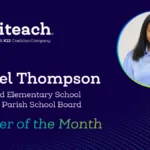Boundaries
 Anytime the talk about boundaries comes up it can always create a small feeling of apprehension. Everyone has to create personal boundaries in their personal life and their work life. Personal boundaries by definition are guidelines, rules or limits that a person creates to identify reasonable, safe and permissible ways for other people to behave towards them and how they will respond when someone passes those limits.
Anytime the talk about boundaries comes up it can always create a small feeling of apprehension. Everyone has to create personal boundaries in their personal life and their work life. Personal boundaries by definition are guidelines, rules or limits that a person creates to identify reasonable, safe and permissible ways for other people to behave towards them and how they will respond when someone passes those limits.
There are several different ways to look into how to set boundaries personally. There are seven books written by Dr. Henry Cloud and Dr. John Townsend in a Boundaries series dedicated to setting boundaries in key areas of life. Start by reading Boundaries, or find help for specific relationships, such as Boundaries in Marriage, Boundaries with Kids, Boundaries with Teens, and Boundaries in Dating. As your confidence using boundaries grows, you’ll find Beyond Boundaries and Boundaries for Leaders to be indispensable resources. You can look into the Boundaries series at https://www.boundariesbooks.com.
For free options, Oprah has an amazing post setting simple but firm boundaries. You can look at them at www.oprah.com/spirit/begin-to-set-personal-boundaries_1/all. She will walk you through Self-Awareness, Setting Your Boundaries, and Strengthen Your Internal Boundaries.
Creating boundaries in your personal life will look different to everyone. What each person needs as boundaries will differ. Who are you? What do you value? Figure out what, exactly, you’re comfortable with and what you aren’t. This requires inner dialogue with yourself and realization with what you need. It is very important to know what your personal boundaries are first so that you can create boundaries in your work life.
Setting Boundaries as a Teacher
As a teacher that are several boundaries that have to be set. Between grading papers and communication with coworkers, parents and students.
How much time should you commit to spending papers? I vowed from day one that I would not take any papers home. You have to realize this requires you to stay at school later. This worked for me because I didn’t have children that I needed to go home to. This might not work for you. You might need to take papers home to grade. Several teachers I worked with did this and that is ok. Don’t let it devour you and consume all of your time.
You need to create a boundary to give yourself some down tie to recharge. If you can, utilize your students to help grade. If there is a quiz in class, have your students pass them to the person to their left or right and call out the answers and let them grade. Have a variety of assignment types and formats. Not every assignment needs to be a report or paper and not every assignment needs to be written in complete sentences. Moving beyond traditional paper-pencil assessments will significantly reduce your grading load.
Communication Boundaries with Teachers
What type of communication boundaries need to be set in place for teachers? The teacher-student relationship is not equal. Teachers and all education professionals are in a unique
position of trust, care, responsibility, authority and influence with their students. Setting boundaries in the classroom are easy. You just have to stay consistent on your expectations.
Communication with Students Outside the Classroom
I do not suggest you giving out your personal phone number to students or families. That is a big personal boundary that should never be crossed, personally. There are several different options for communication if students or families need to contact you. Your school e-mail is one option but you have to make sure to check your e-mail from home. One of the easiest ways to establish a channel of communication with students and parents is through one of the messaging apps available. Educators can quickly send messages, share information and images and more.
There are a lot of options available and your choices will depend on the level and area you teach and whether your goal is to set up communication between students and you or with parents. Out of the various options available, I have used Bloomz (free award winning app for communication with parents) and Remind (free app for communication with students). By creating or setting up a digital learning space through a website or an LMS, you can share resources, post assignments, celebrate student success and classroom events, and be available for student questions anytime. The information can be updated regularly and you can include a way for parents to contact you or for students to get help when they need. It can be a collaborative learning space whether it be a tool like edmodo.com, schoology.com, a Google site or even through Wikispaces. Any of these options would help to create a connection between you, the students, and their learning. You may also create a boundary as to what time you will stop responding to communication from students or families.
Teachers Need to Set Emotional Boundaries
The last boundary I want to discuss is emotional boundaries with students and families. Make sure to maintain a professional role acting as a role model for students. Avoid acting in a peer or parental role as this can cause dependency that is not in the teachers role. If a student comes to you needing support, refer them to your school counselor or school crisis team. A school counselor works in primary schools and/or secondary schools to provide academic, career, college access/affordability/admission, and social-emotional competencies to all students through a school counseling program.
Do not forget that you cannot suggest any medical suggestions to student or their families. If you suggest it, the school district can be required to pay for such interventions.
Lastly, setting boundaries is not always easy, but a great book called Crucial Conversations can help. We have a post where you can read about Crucial Conversations here.
Looking to Get Certified to Teach?
Start by choosing where you want to teach: Texas, Louisiana, Nevada, Hawaii, Washington D.C., or Tennessee.



